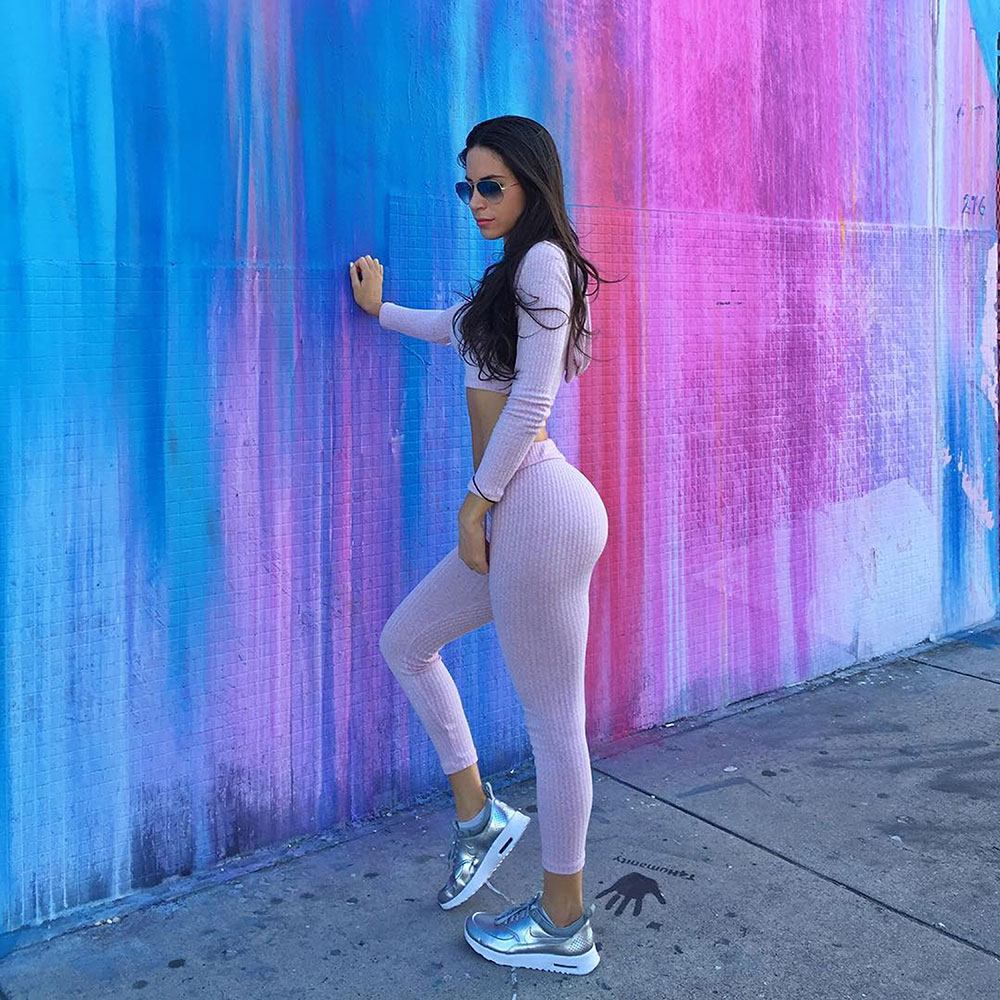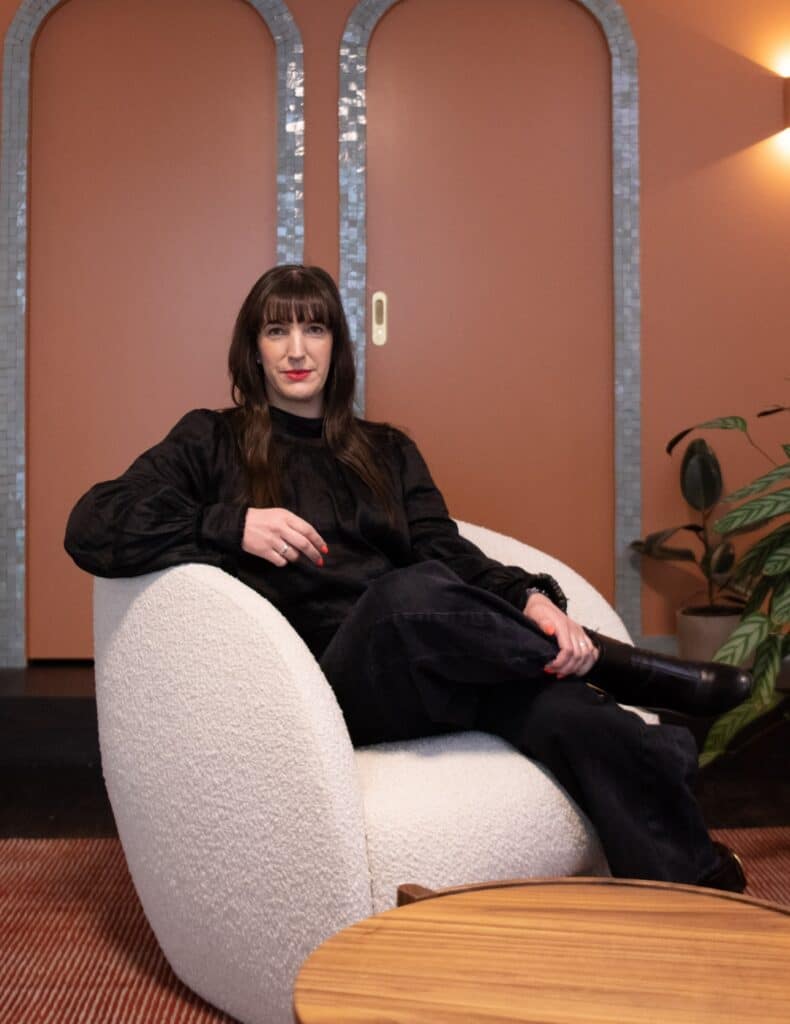
Social media keeps us abreast of what’s hot, but have trending body types gone too far?
In November 2016, Apple started beta testing its iOS 10.2 update for iPhone. Among the new and improved features were dozens of redesigned emoji, including a slightly less anatomical-looking peach. It was a seemingly innocuous change, but it created an online furore that rivalled Brangelina’s divorce announcement. Why? Because the peach — or ‘butt’ emoji, as it had been known — was a cultural symbol of our time; an emblem of a near-universal obsession with, well, shapely bums, and tampering with it had consequences. Chief among them? Suddenly, we had nothing with which to caption our belfies.
A portmanteau word combining ‘butt’ and ‘selfie’, the belfie started dominating our smartphone screens in 2014, when Nicki Minaj’s booty-anthem ‘Anaconda’ was charting at number two on the US Billboard Hot 100, and every Kardashian and her D-list BFF was photographing her posterior in a bathroom mirror so as to show off her, er, squat work. Fast-forward to 2017 and those cartoonish Kardashian curves are still the ones by which all others are graded.

Kim Kardashian-West.
The extent to which they are real, meanwhile, remains the subject of hot debate. We know, of course, that Kim, Khloe, Kourtney, Kendall and Kylie are fond of waist-training devices — each sister having donned one for a sponsored Instagram post more than once. This isn’t to say they are only in it for the payday. Photoshop sleuths would argue, though, that those exaggerated hourglass figures are more to do with dodgy retouching than regular use of a latex corset. Others say cosmetic surgeries, from rib removal procedures to Brazilian butt lifts (where fat is liposuctioned from other areas of the body and injected into the buttocks), are responsible.
Despite constant denials from the Kardashian camp, the Brazilian butt lift rumours that routinely circulate around the infamous family saw the number of procedures performed in the USA increase by 28% between 2014 and 2015. In 2016, lipo-filling was the fastest growing cosmetic surgery according to the American Society of Plastic Surgeons. It’s hard to say whether this particular trend has trickled down here. New Zealand’s authority on lipo-filling, Dr Robert Beulink, couldn’t be reached for comment before we went to print — his office explaining, apologetically, that it was his busiest time of year. Take from that what you will.

Kylie Jenner.
As for whether Kiwis are undergoing more tried-and-true surgeries to look like their idols? There’s no question. Taranaki-born, London-based e-commerce site manager Zara McKenzie — whose provocative Instagram posts frequently fetch her u.pwards of 1000 likes — has always had a thing for the Kardashian-Jenner aesthetic. “Although it started with Pamela Anderson, to be perfectly honest,” says Zara. “The attitude, the boobs and the high-cut bikinis… I think that whole look has become popular again largely due to Kim and Kylie, but I’ve always admired it, regardless of it being on-trend or not.”
After spending 10 years thinking about breast augmentation, the 29-year-old, who “always wanted curves”, went under the knife in 2015. Around the same time, she started getting temporary lip fillers, which she tops up “once or twice a year”. But although this adds weight to the Kylie Jenner comparisons, she insists she’s never been one to conform to popular standards of beauty. “Growing up I did the opposite of what I felt society wanted… covering my body in tattoos and dying my hair pink. I’ve always tried to be myself and do what makes me happy.” For the most part, sharing her body on social media has been a positive experience for Zara. “I don’t ignore the dangers and I make sure to live a real life outside of a timeline,” she says. “But as far as giving me the freedom to express myself, I’ve found it to be both an empowering and inspiring tool.”

Zara McKenzie.
Callum Schofield and Kelly Small, personal trainers at elite Auckland gym, The Exercise Room, attest that social media is a key motivator for their clients, influencing not just their desire to exercise, but how they want to look afterwards. Of late, says Callum, a ‘fitspo’ body has replaced the Kardashian body as the one everyone covets. “A couple of years ago, clients coming in with an appearance goal would mention those mainstream celebrities,” says Callum. “But because fitness has become so huge on Instagram, the fitness bloggers are like the new celebrities.”
A happy medium between Kardashian curves and the uber-muscular physique that came out of the CrossFit craze of the early 2010s, the fitspo body is feminine yet strong — epitomised by Instafamous fitness gurus, such as belfie queen Jen Selter, who told The New York Post, “I mainly do body selfies… [people] don’t want to see my face.” Callum and Kelly confirm that glute workouts remain a high priority for their female clients. “Even my older clients!” says Kelly. “Everyone still wants big glutes.”

Jen Selter.
It’s a far cry from the 1990s and 2000s, when heroin chic was all the rage and rail-thin bodies were the goal. For Callum, this is a welcome shift — not just because people are approaching fitness far more holistically, but because they are becoming more involved in the entire training process. “Clients are telling me what they want to achieve, and literally showing me, on their phones, the movements they want to do to achieve it,” he says. The downside is having to manage the expectations of clients who are obsessed with achieving something that is, at best, unrealistic for them, and at worst, not humanly possible. “It’s tough seeing clients get disheartened about their goals and feel like they’re not getting results when it’s because they’re aiming for something that’s not real,” says Callum.

Zara McKenzie.
Herein lies the destructive potential of social media, says Auckland psychotherapist Kellie Lavender, who for 16 years has specialised in treating eating disorders. According to Kellie, the fact that the current ‘ideal’ body has curves doesn’t make it a healthier body to idolise. “It’s the mindset that we have to be something else to be better,” she says. “Whether that’s thinner or curvier it doesn’t really matter… it’s the same thing just in a different form.”
And although Callum and Kelly claim that it’s been years since a thin frame was a client’s objective, Kellie confirms that eating disorder numbers have been fairly consistent throughout her career. She also notes that the less extreme diagnosis of ‘disordered eating’ has become — at least anecdotally — more prevalent. She blames the relentless (and relentlessly confusing) messages we receive in our social media feeds about what we should be putting in our bodies.

Zara McKenzie.
“Social media is such a big part of adolescents’ lives, so to see it glorifying ‘fashionable’ body types and influencing young people to diet is a concern,” she says. “What we should be talking about is your body is fashionable because it’s yours.”
It’s true that bodies come in all shapes and sizes. It’s true, too, that so do emoji. So whether you identify as an apple, a pear…heck, even a donut — embrace it. And if the peach is still your go-to? You’ll be pleased to know that by the time iOS 10.2 was rolled out to all iPhone users in December, Apple had reversed its previous changes. Now that’s just peachy.










